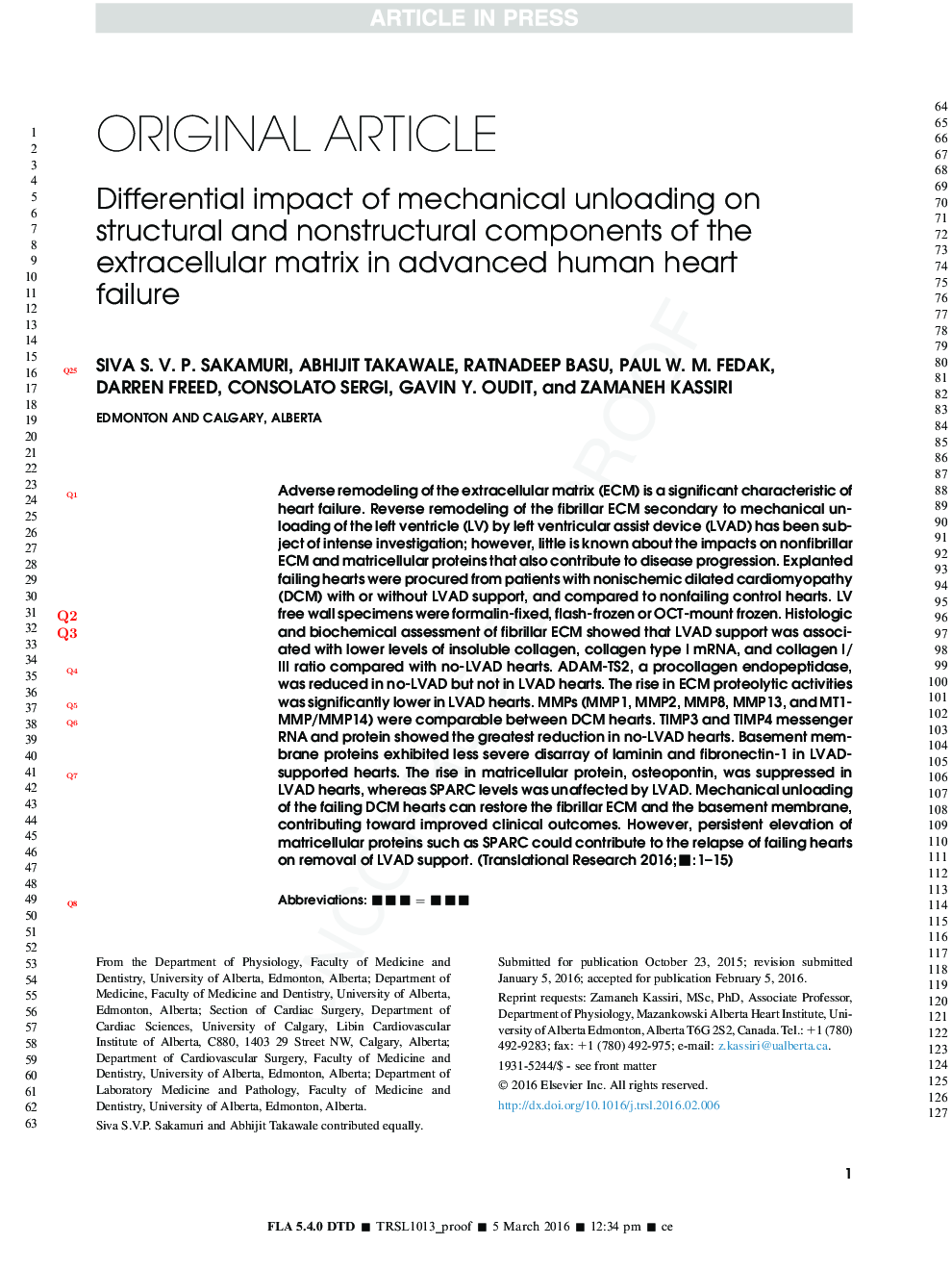| کد مقاله | کد نشریه | سال انتشار | مقاله انگلیسی | نسخه تمام متن |
|---|---|---|---|---|
| 6155851 | 1597938 | 2016 | 15 صفحه PDF | دانلود رایگان |
عنوان انگلیسی مقاله ISI
Differential impact of mechanical unloading on structural and nonstructural components of the extracellular matrix in advanced human heart failure
ترجمه فارسی عنوان
تأثیر افتراق تخلیه مکانیکی بر اجزای ساختاری و غیر ساختاری ماتریکس خارج سلولی در نارسایی قلب پیشرفته انسان
دانلود مقاله + سفارش ترجمه
دانلود مقاله ISI انگلیسی
رایگان برای ایرانیان
کلمات کلیدی
LVADIQROPNRT-PCRSPARCTGFβDCMECMPSRMT1-MMPBIVADMMPpicrosirius red - picrosirius قرمزangiotensin-converting-enzyme inhibitor - آنژیوتانسین تبدیل آنزیم مهار کنندهEDTA - اتیلن دی آمین تترا استیک اسید Ethylenediaminetetraacetic acid - اتیلینیدامین تتراستیک اسیدOsteopontin - استئوپنتینOct - اکتبرleft ventricle - بطن چپTransforming Growth Factor Beta - تبدیل بتا فاکتور رشدbiventricular assist device - دستگاه کمک دو طرفهleft ventricular assist device - دستگاه کمکی بطن قلبoptimal cutting temperature - دمای برش مطلوبExtracellular matrix - ماتریکس خارج سلولیmatrix metalloproteinase - ماتریکس متالوپروتئینازinterquartile range - محدوده بین محدبACEI یا angiotensin convert enzyme inhibitor - مهارکننده آنزیم تبدیلکننده آنژیوتانسینheart failure - نارسایی قلبیMembrane type 1-matrix metalloproteinase - نوع غشاء متالوپروتئیناز ماتریکس 1reverse transcription polymerase chain reaction - واکنش زنجیره ای پلیمراز رونویسی معکوسsecreted protein acidic and rich in cysteine - پروتئین اسیدی و غنی از سیتین را ترشح می کندDilated cardiomyopathy - کاردیومیوپاتی دیلاته، کاردیومیوپاتی کامل
موضوعات مرتبط
علوم پزشکی و سلامت
پزشکی و دندانپزشکی
پزشکی و دندانپزشکی (عمومی)
چکیده انگلیسی
Adverse remodeling of the extracellular matrix (ECM) is a significant characteristic of heart failure. Reverse remodeling of the fibrillar ECM secondary to mechanical unloading of the left ventricle (LV) by left ventricular assist device (LVAD) has been subject of intense investigation; however, little is known about the impacts on nonfibrillar ECM and matricellular proteins that also contribute to disease progression. Explanted failing hearts were procured from patients with nonischemic dilated cardiomyopathy (DCM) with or without LVAD support, and compared to nonfailing control hearts. LV free wall specimens were formalin-fixed, flash-frozen or optimum cutting temperature-mount frozen. Histologic and biochemical assessment of fibrillar ECM showed that LVAD support was associated with lower levels of insoluble collagen, collagen type I mRNA, and collagen I/III ratio compared with no-LVAD hearts. A disintegrin and Metalloproteinase with Thrombospondin Motifs-2 (ADAM-TS2), a procollagen endopeptidase, was reduced in no-LVAD but not in LVAD hearts. The rise in ECM proteolytic activities was significantly lower in LVAD hearts. Matrix metalloproteinases (MMP1, MMP2, MMP8, MMP13, and MT1-MMP/MMP14) were comparable between DCM hearts. Tissue inhibitor of metalloproteinase (TIMP)3 and TIMP4 messenger RNA and protein showed the greatest reduction in no-LVAD hearts. Basement membrane proteins exhibited less severe disarray of laminin and fibronectin-1 in LVAD-supported hearts. The rise in matricellular protein, osteopontin, was suppressed in LVAD hearts, whereas secreted protein, acidic, cysteine-rich (SPARC) levels was unaffected by LVAD. Mechanical unloading of the failing DCM hearts can restore the fibrillar ECM and the basement membrane, contributing toward improved clinical outcomes. However, persistent elevation of matricellular proteins such as SPARC could contribute to the relapse of failing hearts on removal of LVAD support.
ناشر
Database: Elsevier - ScienceDirect (ساینس دایرکت)
Journal: Translational Research - Volume 172, June 2016, Pages 30-44
Journal: Translational Research - Volume 172, June 2016, Pages 30-44
نویسندگان
Siva S.V.P. Sakamuri, Abhijit Takawale, Ratnadeep Basu, Paul W.M. Fedak, Darren Freed, Consolato Sergi, Gavin Y. Oudit, Zamaneh Kassiri,
